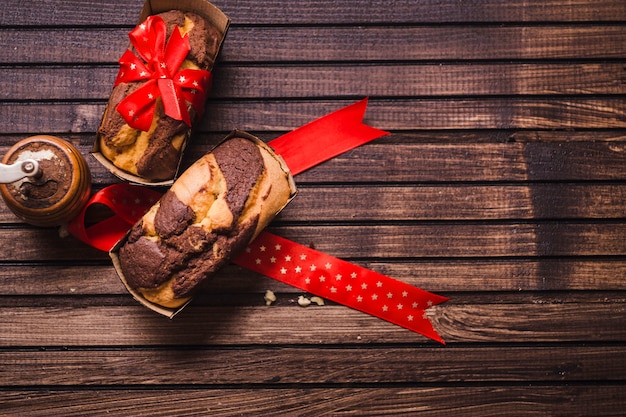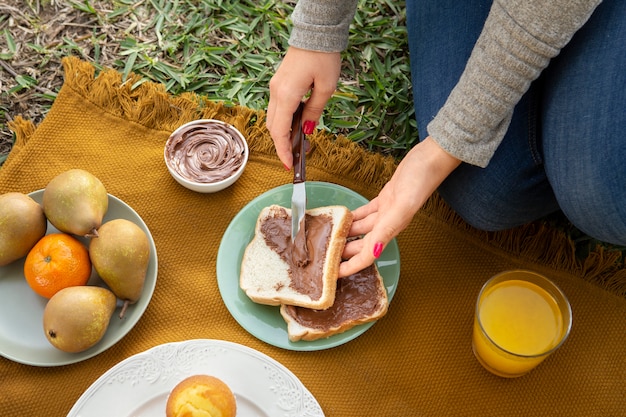Let me tell you, the first time I saw a venison heart, I was a little taken aback. It wasn't the sleek, familiar cut of steak I was used to. But you know what? That initial hesitation quickly turned into curiosity, and I discovered this humble organ can be transformed into something truly delicious. I'm here to share my journey with you, from prepping that heart to savouring the finished dish. Let's get cooking!
Part 1: Unveiling the Venison Heart

It's true, the venison heart isn't your typical cut of meat. It has a more robust texture and a slightly gamey flavor, which can be a bit daunting for some. But trust me, with the right approach, it can be a real culinary star. Think of it as a blank canvas for your culinary creativity.
Prepping the Heart: A Gentle Touch
Before you jump into the kitchen, you'll need to prep the heart. It's not a complicated process, but it's essential for a great final product.
- A Thorough Rinse: First things first, run the venison heart under cold water to wash away any blood or debris. It's important to give it a good rinse to ensure it's clean.
- Trimming for Tenderness: Use a sharp knife to remove any excess fat or tough membranes around the heart. These can be quite tough, and trimming them will make the heart more tender and palatable.
- Cutting it Up: You can cook the whole heart, but for easier cooking, I usually cut it into smaller chunks. The size of your cuts will depend on your chosen cooking method. For braising, larger chunks are ideal, while smaller pieces work better for stir-frying or grilling.
After this, your venison heart is ready for its culinary transformation! Now, let's explore some cooking methods.
Part 2: Cooking the Venison Heart: A Taste of the Wild

The beauty of venison heart lies in its versatility. It can be cooked in a variety of ways, each delivering a unique flavor profile. Here are two of my favorites.
The Art of Braising: Slow and Low for Maximum Flavor
Braising is a classic technique that's ideal for tough cuts of meat like venison heart. It's all about slow cooking in liquid over low heat, which helps tenderize the heart and create a rich, flavorful sauce. Think of it as a slow-cooked hug, where the flavors meld and intensify.
Here's a recipe I love, with a combination of sweet and savory notes that complement the heart perfectly.
Ingredients:
- 1 venison heart, cleaned and cut into chunks (about 1-2 inches)
- 1 tablespoon olive oil
- 1 large onion, chopped
- 2 carrots, chopped
- 2 celery stalks, chopped
- 2 cloves garlic, minced
- 1 cup dry red wine (like Cabernet Sauvignon or Merlot)
- 1 cup beef broth
- 1 teaspoon dried thyme
- 1 bay leaf
- Salt and freshly ground black pepper to taste
Instructions:
1. Preheat your oven to 325°F (160°C).
2. In a large dutch oven or oven-safe pot, heat the olive oil over medium heat. Brown the venison heart chunks on all sides. This gives the heart a beautiful crust and adds depth of flavor. Remove the heart and set aside.
3. Add the chopped onion, carrots, and celery to the pot. Cook, stirring occasionally, until the vegetables are softened, about 5 minutes.
4. Add the minced garlic and cook for another minute, until fragrant. Don't let it burn!
5. Pour in the red wine and bring to a simmer. Scrape the bottom of the pot to loosen any browned bits, as these bits hold a lot of delicious flavor.
6. Add the beef broth, thyme, and bay leaf. Season generously with salt and pepper.
7. Return the venison heart to the pot. Bring the mixture to a simmer again, then cover the pot and transfer it to the preheated oven.
8. Braise for at least 2 hours, or until the heart is incredibly tender. You can check the tenderness by piercing it with a fork. It should slide in easily. If it's still a bit tough, braise for another 30 minutes or so.
9. Once the heart is cooked, remove the pot from the oven and let it cool slightly. Remove the bay leaf and discard it.
10. Serve the braised venison heart with the rich, flavorful sauce. I love it over creamy mashed potatoes or a bed of fluffy rice. But you can get creative with your sides - roasted root vegetables, a side salad, or even a hearty bread are delicious accompaniments.
Stir-Frying: A Quick and Flavorful Approach
For a faster option, stir-frying is a great way to cook venison heart. It's a fantastic technique for busy weeknights and delivers a flavorful, satisfying meal.
This simple recipe is packed with flavor and comes together quickly.
Ingredients:
- 1 venison heart, cleaned and cut into small chunks (about 1/2 inch)
- 1 tablespoon olive oil
- 1 red bell pepper, sliced
- 1 onion, sliced
- 2 cloves garlic, minced
- 1/2 cup soy sauce
- 1 tablespoon honey
- 1 teaspoon cornstarch
- 1/2 cup water
- Salt and freshly ground black pepper to taste
Instructions:
1. Heat the olive oil in a large skillet or wok over medium-high heat.
2. Add the venison heart to the skillet and cook, stirring frequently, until it's browned on all sides, about 5 minutes. Remove the heart from the skillet and set aside.
3. Add the red bell pepper and onion to the skillet. Cook, stirring occasionally, until softened, about 3 minutes.
4. Add the minced garlic and cook for another minute, until fragrant.
5. In a small bowl, whisk together the soy sauce, honey, cornstarch, and water until smooth. Pour this mixture into the skillet with the vegetables. Bring the mixture to a simmer, and cook for 1-2 minutes, stirring constantly, until the sauce begins to thicken.
6. Return the venison heart to the skillet. Cook for another 2 minutes, or until the sauce has fully thickened and coats the venison heart.
7. Serve the stir-fried venison heart over rice or noodles. It’s a delicious and satisfying meal that's perfect for a weeknight dinner.
Part 3: Mastering the Texture: Tenderizing the Venison Heart

The texture of venison heart is definitely different than your average cut of beef or chicken. It's got a bit of chewiness to it, which some people love, but others might find a bit too tough. If you're not a fan of the chewy texture, there are ways to tenderize the venison heart before you cook it.
The Power of a meat tenderizer
A meat tenderizer, the one with the little spikes, is a great tool for this. Just pound the heart for a few minutes to break down those muscle fibers and make it more tender. Think of it as giving the heart a little massage, making it more receptive to the cooking process.
Tenderizing Alternatives
Don't have a meat tenderizer? No worries! You can tenderize the venison heart in a few other ways.
- Marinades to the Rescue: Soaking the venison heart in a marinade for a few hours can do wonders. The acidic ingredients in the marinade, like vinegar or citrus juice, help break down the tough muscle fibers and infuse the heart with flavor.
- The Slow Cook Method: As we talked about with braising, slow cooking is a fantastic way to tenderize meat. The gentle heat and long cooking time soften the muscle fibers and result in a wonderfully tender heart.
- pressure cooker Power: A pressure cooker can be a great tool for quickly tenderizing venison heart. The pressure cooks the heart efficiently, breaking down the tough fibers and leaving you with tender and juicy meat.
Experiment with different methods and see what works best for your taste. The key is to find a balance between tenderness and maintaining the characteristic flavor of the heart.
Part 4: Embracing the Flavor: A Taste of the Wild
Venison heart has a distinct flavor, a bit earthy and gamey, which some find intriguing and others find a little strong. It's a taste of the wild, an earthy essence with a hint of sweetness. Some people describe it as having a slightly metallic taste, but I wouldn't call it off-putting. It's all part of the unique flavor profile.
If you're new to venison heart, start with recipes that combine it with other strong flavors like onions, garlic, or red wine. These flavors can balance out the gamey taste and make the heart more approachable. But don't be afraid to explore and experiment!
Part 5: Flavors Unleashed: A culinary adventure
The venison heart is a blank canvas, ready to be painted with your culinary creativity. It pairs beautifully with a wide range of flavors, so don't be afraid to get adventurous!
Classic Pairings: A Foundation of Flavor
Some flavors are timeless companions for venison heart, providing a foundation for your culinary creations.
- Red Wine: Red wine, especially Cabernet Sauvignon or Merlot, is a fantastic pairing. Use it in braises, marinades, and sauces. It enhances the natural richness of the heart and adds a lovely complexity to the dish.
- Herbs: Fresh or dried herbs, like thyme, rosemary, bay leaf, or oregano, add depth and aroma to venison heart dishes. Experiment with different combinations to create your own signature flavor profile.
- Garlic and Onions: These aromatic ingredients are classic partners, adding a delicious savory base to any venison heart dish.
- Vinegar: A splash of vinegar, like balsamic or apple cider vinegar, can cut through the richness of the heart and add a bright, tangy flavor.
Stepping Outside the Box: Exploring New Flavors
Now, let's get a little more adventurous! Beyond the classics, you can create unique and exciting dishes by venturing into uncharted culinary territory.
- Citrus: A squeeze of lemon or orange juice adds a bright, refreshing note to venison heart dishes. It balances the earthy flavors and adds a burst of acidity.
- Spicy: For a touch of heat, try adding chili peppers, ginger, or cayenne pepper. It's a great way to add a kick and create a more dynamic flavor profile.
- Sweet and Savory: Combine sweet and savory flavors with honey, maple syrup, or brown sugar in your marinade or sauce. It adds a touch of sweetness that contrasts nicely with the savory notes of the heart.
- Asian-Inspired: Embrace Asian flavors with soy sauce, hoisin sauce, ginger, garlic, and sesame oil. It's a delicious combination that adds a bold and exotic touch to your dishes.
Remember, cooking is all about experimenting and finding what you love. Don't be afraid to try new things and see what amazing flavors you can create with venison heart.
Part 6: Serving Up Success: From Humble Stew to Elegant Feast
You've cooked your venison heart, you've added your favorite flavors. Now it's time to show it off! Venison heart can be served in many ways, from comforting stews to elegant plated dishes. It's a versatile ingredient that can be adapted to any occasion.
The Comforting Stew: A Classic Favorite
A venison heart stew is a classic and comforting dish, perfect for a cold winter night. The heart is braised until it's tender, then served in a flavorful broth with vegetables. It's a hearty and satisfying meal that warms you from the inside out. You can add a dollop of sour cream, a sprinkle of fresh parsley, or even a drizzle of balsamic vinegar for extra flavor.
The Elegant Feast: Showcasing the Venison Heart
If you're feeling more adventurous, serve venison heart as a main course. Slice it thinly, pan-sear it until it's crispy, and serve it with a creamy sauce and a side of mashed potatoes or roasted vegetables. It's a delicious and impressive way to showcase the unique flavor of venison heart.
The budget-friendly Option: Delicious and Affordable
Don't forget, venison heart is a budget-friendly option for a delicious meal. It can stretch your grocery budget and create a memorable meal for your family and friends.
Part 7: Leftovers: More Than Just a Second Chance
Leftovers? Yes! Venison heart is delicious cold or reheated. It's a versatile ingredient that can be enjoyed in many ways.
Saving It for Later: Preserving the Flavor
You can easily save venison heart leftovers for a quick lunch or snack the next day. Store it in an airtight container in the refrigerator. It will keep well for 3-4 days.
Reheating Tips: Keeping It Delicious
If you want to reheat your venison heart, you can do it in the microwave, on the stovetop, or in the oven. Just be sure to heat it through thoroughly.
- Microwave: Cover the venison heart with a damp paper towel and microwave on high for 1-2 minutes.
- Stovetop: Heat a small amount of olive oil in a skillet over medium heat. Add the venison heart and cook for 2-3 minutes, or until heated through.
- Oven: Preheat the oven to 350°F (175°C). Place the venison heart in a baking dish and heat for 10-15 minutes, or until heated through.
You can also get creative with your leftovers. Slice up the venison heart and add it to a salad, sandwich, or pasta dish. It's a great way to add a delicious flavor boost to your meals.
Part 8: FAQs: Your Venison Heart Questions Answered
Here are some frequently asked questions about venison heart to help you on your culinary adventure.
What are the health benefits of eating venison heart?
Venison heart is a good source of protein and iron. It's also relatively low in fat and calories. It's a healthy and delicious way to add variety to your diet.
How long does venison heart last in the refrigerator?
Venison heart can last in the refrigerator for 3-4 days. Be sure to store it in an airtight container to preserve its freshness and flavor.
What are some other ways to cook venison heart?
You can also cook venison heart in a slow cooker, pressure cooker, or grill. Experiment with different methods and find what works best for your taste and preference.
How can I tell if venison heart is cooked through?
You can tell if venison heart is cooked through by checking the internal temperature with a meat thermometer. The internal temperature should reach 160°F (71°C).
Can you freeze venison heart?
Yes, you can freeze venison heart. Wrap it tightly in plastic wrap and aluminum foil. It can be frozen for up to 3 months.
Part 9: Final Thoughts: Embracing the Unexpected
So, there you have it, my exploration into the world of venison heart! It's a truly unique ingredient, and I hope this guide has inspired you to try it out yourself. Don't be afraid to experiment with different recipes and techniques. You might just discover a new favorite dish!
And remember, cooking is all about having fun. So, relax, experiment, and enjoy the process!
Everyone is watching

Prime Rib Roast Cooking Time Chart: Per Pound Guide
Cooking TipsPrime rib roast. Just the name conjures images of lavish dinners, crackling fires, and hearty laughter. It’s ...

How Long to Bake Potatoes in the Oven (Perfect Every Time)
Cooking TipsBaked potatoes are a staple in my kitchen. They're incredibly versatile, delicious, and surprisingly easy to m...

Perfect Rice Every Time: The Ultimate Guide to Cooking Rice
Cooking TipsAs a self-proclaimed foodie, I've always been a bit obsessed with rice. It's the foundation of countless cuisi...

The Ultimate Guide to Cooking Asparagus: Tips, Techniques, and Recipes
Cooking TipsAsparagus. The mere mention of this spring delicacy conjures up images of vibrant green spears, crisp and burs...

Ultimate Guide to Cooking the Perfect Thanksgiving Turkey
Cooking TipsThanksgiving. Just the word conjures up images of overflowing tables laden with delicious food, the scent of r...
